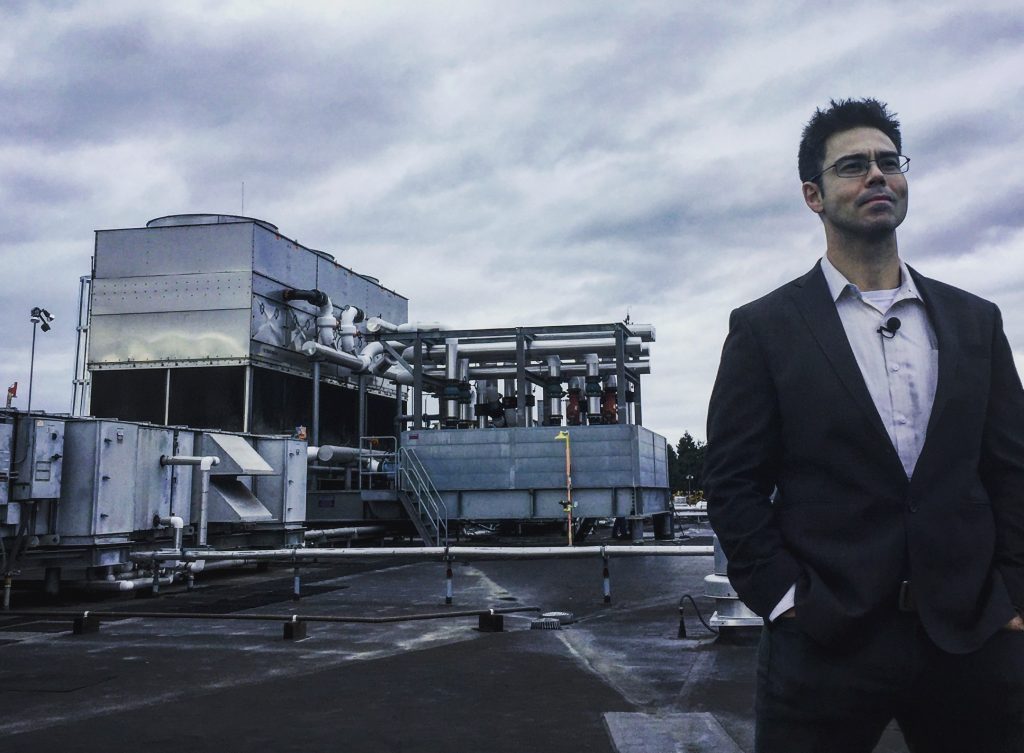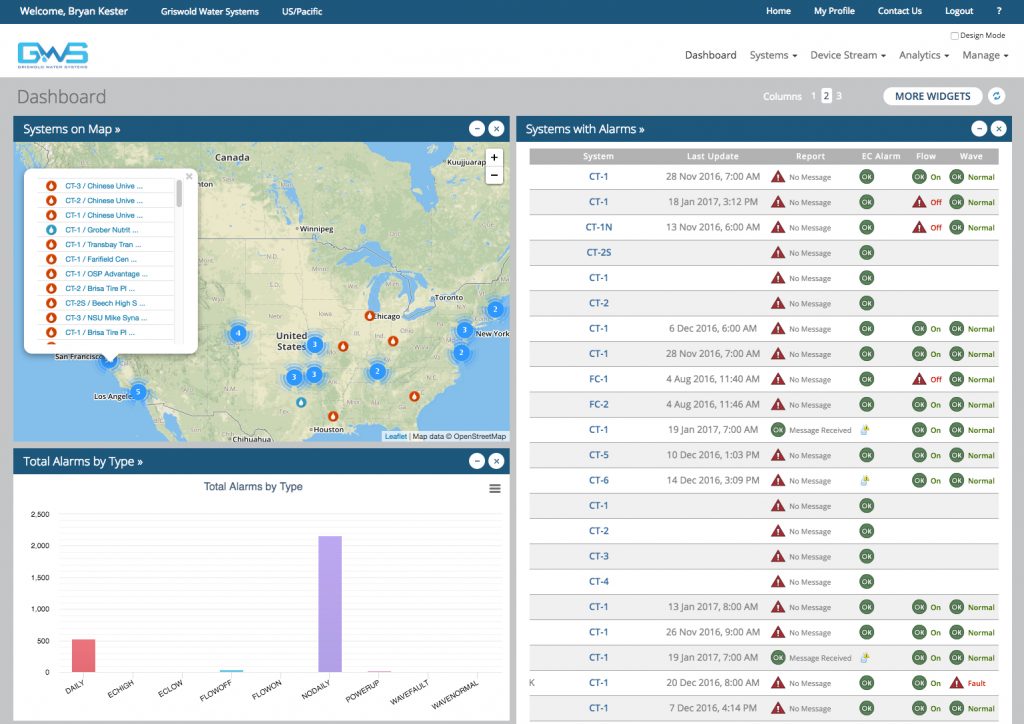Griswold Water Systems is saving water, money and lives with an assist from Autodesk Fusion Connect
(Editor’s note: This post is adapted from a chapter of the recently published book “Precision: Principles, Practices and Solutions for the Internet of Things,” by Stanford lecturer and former president of Oracle On Demand, Timothy Chou. It is available at Amazon and other online booksellers.)
Water cooling towers atop non-residential buildings are often unseen but they are ubiquitous and have become an essential part of the built environment. They have been around since the industrial revolution and work by lowering water temperature through evaporation, mimicking how perspiration cools the human body.
What’s astonishing is that a single, modestly sized cooling tower can consume millions of gallons of water annually. Additionally, the warm, moist environment of a cooling tower can breed harmful bacteria, including the type that causes Legionellosis (Legionnaires’ disease). The disease is named after the 1976 American Legion convention in Philadelphia where 221 people were affected and 34 later died. While most cases stem from potable water sources, cooling towers are another source of this disease and the toxic mist can travel up to two miles from the cooling tower.
https://youtube.com/watch?v=OcQ6cFN583s
There are an estimated 8,000 to 18,000 cases of Legionellosis per year in the United States that require hospitalization. There is no known vaccine and 10% of those infected die. In the summer of 2015, an outbreak in the Bronx, NY killed twelve people and made about 120 people sick.
In addition to the health risk, cooling tower water can also form calcium deposits that can clog pipes, waste energy, and lead to system fouling. By one measure, system fouling in heat transfer equipment negatively impacts U.S. GDP by 0.25%.
To combat these threats, the industry has traditionally relied on chemical service providers to treat the water on a monthly basis with toxic chemicals, such as biocides, algaecides, and various scale and corrosion inhibitors. But there are two major challenges with this approach.
First, the chemicals typically used to treat the cooling towers are so toxic the water cannot be recycled for landscape, irrigation or toilets. To put this in perspective a chemically treated, medium sized cooling tower requiring 17.7 million gallons of water annually would need to discard 5 million of these gallons due to toxicity. Not only is this a waste of water but building owners are charged typically more for water disposal than the cost to acquire the water in the first place.
Second, the water chemistry can become unbalanced leading to dangerous bacterial outbreaks or system shut-downs.
A better solution
Southern California-based Griswold Water Systems (GWS) and its president Max Martina believed there was a better way than using toxic chemicals: treat the water in cooling towers with electric fields and remote monitoring.
GWS equipment accomplishes biological control by treating bacteria with a strong electric field so they cannot reproduce and create health risk. When the GWS solution is deployed, biological counts often hover close to drinking water standards.
This allows the conservation of up to 28% of total tower-water consumption and can amount to millions of gallons of water saved annually.
How IoT helps
The Internet of Things (IoT) was another crucial element in the GWS solution. The company partnered with Hollis Controls to build a remote monitoring system and Autodesk for its IoT software, Fusion Connect. Sensors that are part of the system monitor water flow, GWS equipment performance and water conductivity. The data is transmitted over a global 3G wireless network to Autodesk Fusion Connect.
Part of Autodesk’s cloud-based product innovation platform, Fusion Connect includes a data analyzer, online dashboard, reporting tool and web-page builder. These tools enable the relevant stakeholders to configure views that quickly determine the status of a particular cooling tower and notify the relevant people if a sensor detects a potential fault—such as a disruption in water flow.
Typically, the creation of such a connected product solution involves extensive programming or scripting skills, which can be hard to find. Fortunately, Fusion Connect requires zero programming because the data collection, reporting and user workflow is created through a sequence of dropdown menus. In fact, the Hollis Controls team was able to set up the customized system for GWS in less than a week.
Here’s how GWS president Max Martina contrasts the two approaches: “The old chemical services model: show up at the customer’s site with a truck once a month, haul barrels of toxic chemicals to the cooling tower (often on the roof), and fix problems next month when something goes out-of-whack in the meantime. The new service model? Track system performance, eliminate the use of chemicals, respond to downstream system hiccups immediately, preserve system efficiency and run-time, while protecting customer-peace of mind.”
Saving water, money and lives.
Not only does GWS’s precision water treatment eliminate the need for chemicals, but it also reduces water usage. For example, with traditional chemical treatments, a typical 1,000-ton cooling tower running year-round would use 17.7 million gallons and 5 million gallons of that now toxic water would need to be discarded. With the GWS solution, water savings are typically reduced by 17%-28% or 3-5 million gallons per year. Cost savings for water and sewer services averages about 33% or $25,000 per year based on typical fees in the US.
Finally, by replacing a monthly chemical services firm visit with always-on monitoring, the building owner/operator will typically see an 85% improvement in system uptime because problems can be identified and resolved far more quickly.
All together, GWS water treatment is more efficient, less expensive to operate, and significantly cleaner. Owners and operators thereby eliminate employee exposure to toxic chemicals, conserve precious resources, and reduce the risk of a legionella outbreak.
Going back to the 2015 outbreak of Legionnaires Disease in the Bronx, the city found that bacteria had regrown in at least fifteen cooling towers under chemical treatment that had been disinfected just two months prior.
In light of the tens of thousands of cooling towers currently operating in the United States, you might wonder how the water in your office building, school or facility is being treated…? Perhaps it’s time for better, safer IoT-powered solution.


